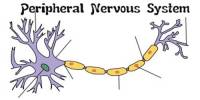Dual inheritance theory (DIT), also known as gene-culture coevolution or biocultural evolution, was developed in the 1960s and early 1980s to explain how human behavior is the result of two distinct and interacting evolutionary processes: genetic evolution and cultural evolution. It is a theoretical framework in evolutionary biology and anthropology. It contends that two interacting and interdependent processes influence human evolution: genetic evolution (biological inheritance) and cultural evolution (cultural inheritance).
Changes in genes can lead to changes in culture, which can then influence genetic selection, and vice versa. One of the theory’s central claims is that culture evolves in part through a Darwinian selection process, which dual inheritance theorists frequently describe by analogy to genetic evolution.
Genetic Evolution:
- This aspect of DIT focuses on the transmission of genetic information from one generation to the next through biological reproduction.
- It involves the changes in the frequency of genes in a population over time, driven by mechanisms such as natural selection, genetic drift, and mutation.
- Genetic evolution accounts for the physical and physiological traits inherited through DNA.
Cultural Evolution:
- Cultural evolution, on the other hand, refers to the transmission of cultural information, beliefs, practices, and behaviors from one generation to the next through social learning, imitation, and communication.
- This includes non-genetic forms of inheritance, such as language, technology, social norms, and institutions.
- Cultural evolution allows for the rapid transmission of adaptive traits within a population, and it can occur more rapidly than genetic evolution.
The Dual Inheritance Theory is based on the idea that genes and culture interact and coevolve over time. Cultural practices and behaviors can influence the selective pressures acting on genes, and genetic predispositions can influence the development and spread of specific cultural traits.
This theory helps to explain aspects of human behavior as well as the diversity of cultures observed in various human societies. It implies that both genetic and cultural factors influence human nature, and that the interaction between these two systems has been critical in our species’ evolutionary history.
















